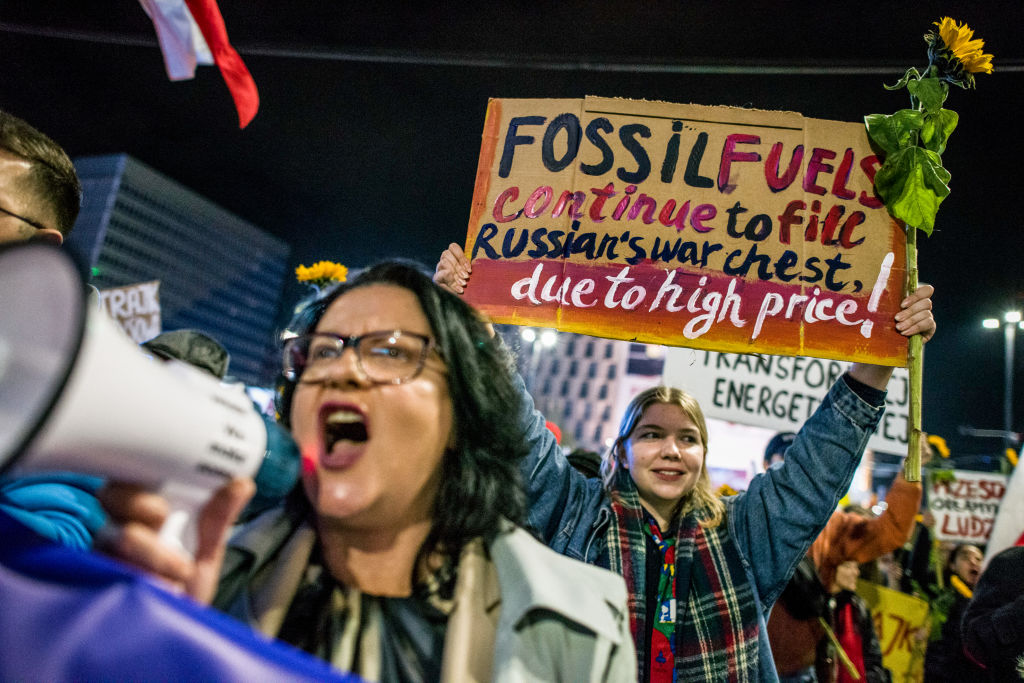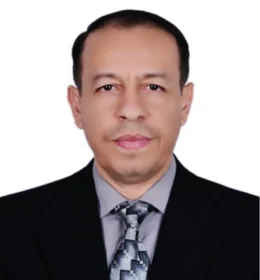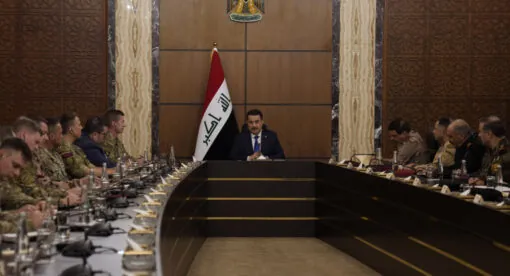Amid soaring energy prices brought on by the Russo-Ukrainian war, Europe will need to figure out how to hasten its transition to cleaner forms of energy. Doing so would benefit Europe financially, environmentally, and in terms of gaining energy independence and security.
Since Russia’s invasion of Ukraine, natural gas power generation in Europe has dropped precipitously, especially in the countries that import the most Russian natural gas. The war has caused a decline in the availability of natural gas, which is used not only for power generation but also for heating and industrial applications. A return to coal for power generation may be a short-term option, but it is not consistent with the European Union’s and its member states’ current climate change strategies. The EU needs new energy policies and smart strategies to diversify energy supplies, lessen reliance on imported fossil fuels, and reduce greenhouse gas emissions – not just for environmental and financial reasons but also to end its dependence on Russian energy sources. Europe can take steps toward this by making both power generation and power consumption systems more energy efficient and by increasing the share of renewables and low- and zero-carbon fuels like green hydrogen in the energy mix.
Behind the Energy Dilemma
Russia plays a pivotal role in international energy markets. It is a major crude oil producer, the largest exporter of natural gas, and the second-largest producer of natural gas (behind the United States), with the world’s largest gas reserves. Coal is another important commodity for the Russian economy; the country ranks fourth in global production and third in providing coal for power plants. Considering that European countries look to Russia to fulfill substantial portions of their energy needs, the ongoing conflict in Ukraine has severely disrupted Europe’s energy sector.
Other factors have contributed to the current energy situation in Europe. A decline in domestic production of nonrenewable forms of energy, alongside a steady demand for energy, has left Europe reliant on energy imports. Moreover, though Russia’s invasion of Ukraine has triggered price hikes, the price of natural gas had already greatly increased prior to the conflict. Furthermore, the recent agreement by OPEC, backed by Russia and Saudi Arabia, to cut oil output by 2 million barrels per day has the potential to boost gas prices and energy expenses and create economic instability in Europe and around the world. The conflict between Russia and Ukraine has made it all the more important to implement new and creative energy policies and increase international collaboration.
A Snapshot of Europe’s Energy Production and Use
To formulate effective energy strategies, policymakers should examine the results of exhaustive research into the short- and long-term effects that major crises (such as pandemics and wars) have on both the domestic and international energy sectors. This author researched and analyzed electricity generation in Europe to determine the changes in the electricity generation mix for European countries as a result of the conflict between Russia and Ukraine. The total electrical loads; total electricity generation; renewables, fossil fuels, and nuclear generation; renewables share; CO2 emissions; and cost of electricity from Feb. 24 to October 24, 2022, were compared to data from the same period the previous year to determine the percentage change for each category. The data comes from the energy platform maintained by the Wärtsilä energy transition laboratory, an open data test environment for the energy industry.
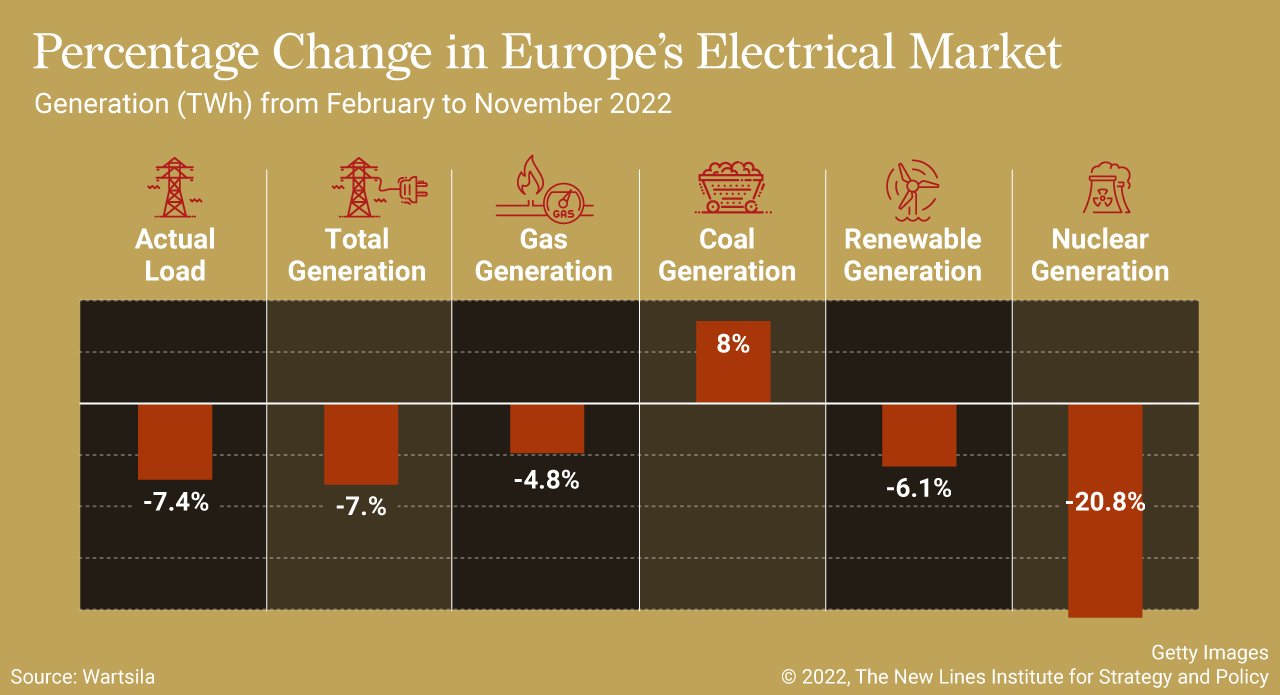
This research showed that during the first eight months after Russia’s invasion of Ukraine, the total electrical load for Europe was 1,761.13 terawatt-hours, while the electricity generated in Europe amounted to 1,691.17 terawatt-hours. The actual electrical load and the total electricity generation for European countries dropped by 7.3% and 7.7%, respectively, during the first eight months of the Russia-Ukraine war. Furthermore, energy costs have increased during the conflict; according to the Wärtsilä platform, prices in France, Germany, and Italy rose by 278.7%, 269.8%, and 212.2%, respectively, compared to the same time period in 2021. Most notably, coal energy production increased while natural gas, renewables, and nuclear power decreased. Increases in coal power generation are associated with increases in emissions of greenhouse gases and particulate matter, both of which have detrimental effects on the environment. Compared to the same period last year, the first eight months of the current war saw a 12.1% increase in CO2 emissions, which goes against the EU’s plan to become carbon neutral by 2050.
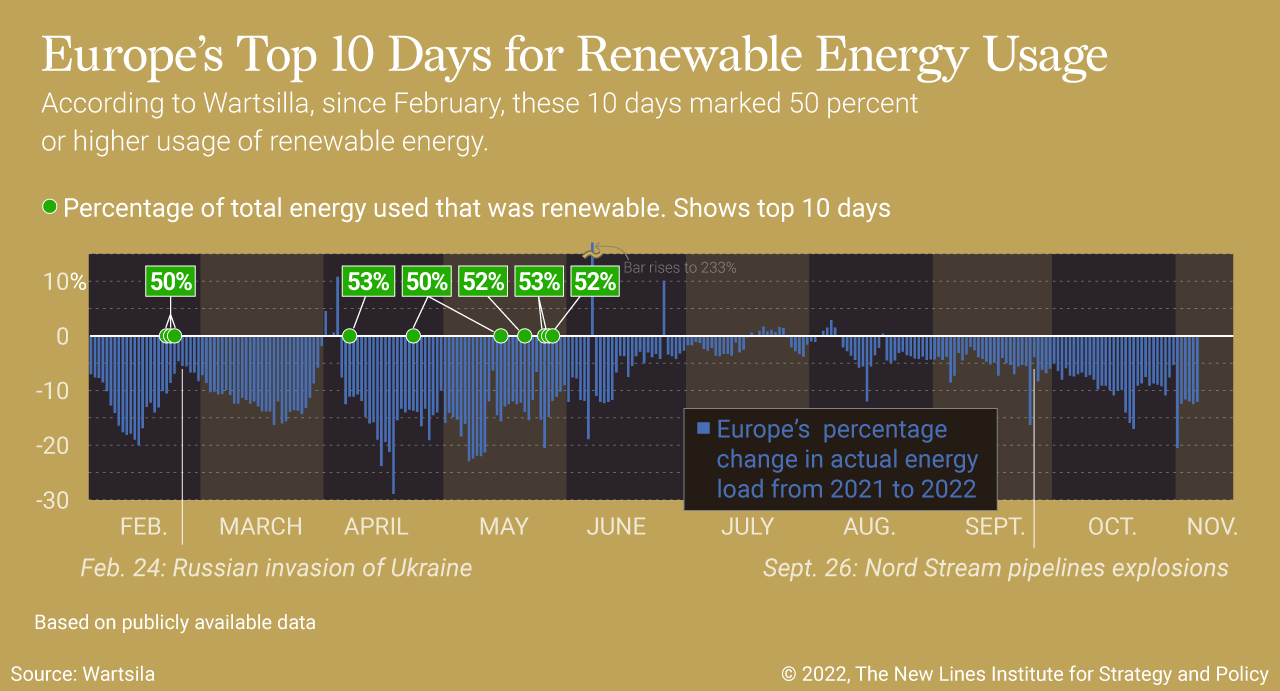
European countries have made a number of efforts to shift power generation away from natural gas and toward coal, nuclear, and other resources in an effort to ease the short-term deficit. Several countries have suggested that coal-fired power plants could be used to make up for the reduction of gas supplies from Russia. Austria intends to reopen a coal-fired power plant that closed in 2020, and France has said it is “reserving the option” to follow suit this winter. The Netherlands has loosened a cap on the amount of energy that can be produced with coal. The German government approved plans to reopen coal-fired power stations that had been shuttered; Germany also intends to keep two nuclear reactors on standby into 2023.
The repercussions of Europe’s energy conundrum brought about by Russia’s invasion of Ukraine could be severe. European governments are concerned that energy price hikes could lead to protests and other political pressures. The increased use of coal would hamper Europe’s ability to live up to its obligations to fight climate change. Global carbon dioxide emissions from fossil fuel use would rise. The transition away from fossil fuels and toward cleaner technologies like wind and solar – including investment and installation of renewable energy infrastructure – could be slowed.
Strategies for a Green Shift
The short-term effects of the Russo-Ukrainian conflict underscore the importance of accelerating the clean energy transition for the long term. In order to improve its energy security and resilience, Europe will need to implement short-term and long-term strategies simultaneously:
- Develop energy-saving measures on both the generation and demand sides
- Develop new initiatives to reduce energy usage while also promoting energy efficiency
- Boost and diversify the European energy mix and significantly increase investments in clean energy
- Increase the emphasis on making the switch to renewable energy; adopt large-scale solar photovoltaic systems and develop large-scale wind farms
- Increase the usage of electrical vehicles for heavy-duty transport, such as trucking, shipping, and aviation
- Develop and modify the grid network (move distribution networks to smart grids that use intelligent matching of local demand and supply, and expand transmission networks to include large-scale wind farms and solar plants)
- Develop large-scale energy storage
- Develop green alternative fuels such as green hydrogen using local renewable resources
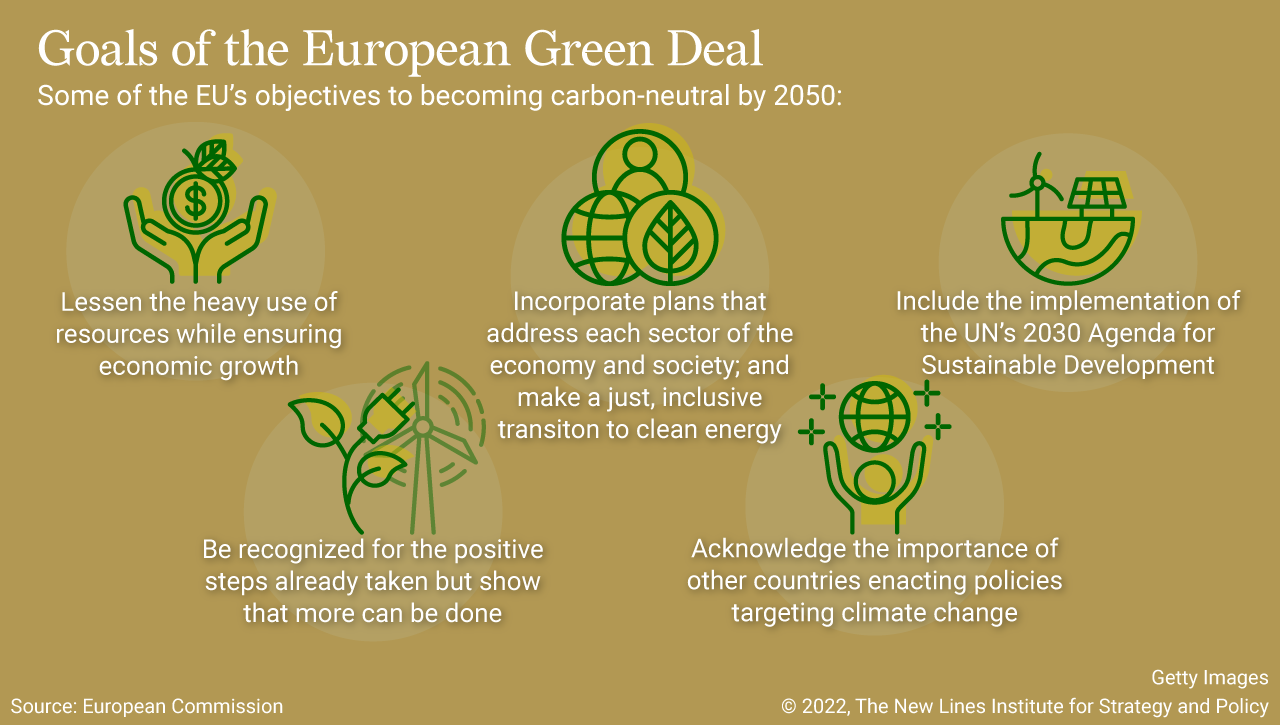
Reducing Usage
Europe will need to develop more energy-efficient measures in industry, buildings, appliances, and transport while urging residents to cut down on consumption. Several European countries are already taking specific steps to reduce energy use ahead of what is expected to be a harsh winter. In Denmark, displays of Christmas lights are being reduced. In France, swimming pool temperatures are being lowered. Germany has limited the hours during which public monuments, city halls, state administration buildings, libraries, and museums are illuminated. France and Germany have both lowered the temperatures in public swimming pools and decreed that billboards will not be lit up at night. Spain has set limits on air conditioning and heating in public buildings, including shops, restaurants, offices, and movie theaters. In Sweden, hundreds of churches will close down, and sauna use is discouraged in both Sweden and Finland.
Developing Cleaner Fuels
Low-carbon options – biofuels, which are produced from biomass – are potential replacements for fossil fuels, but there are drawbacks. Currently, biofuel feedstocks are scarce, and large land areas would be required for the production of those feedstocks. Biofuels have a low energy density, and they come with high costs for transportation, pretreatment, and production.
Green hydrogen and green ammonia are zero-carbon fuels that can be produced locally with renewable electricity. Green hydrogen (along with hydrogen-based fuels like e-methane and e-methanol) has the potential to become the basis for a clean energy economy. However, much work is needed before green hydrogen can be used commercially. The renewable energy-based electrolysis of water that produces green hydrogen comes at a high price. These elevated production costs, along with the absence of an existing value chain, issues with storage and transport, and the need for international standards are among the primary challenges to a green hydrogen-based energy system.
Conventional means of hydrogen production, such as steam reforming of natural gas or oil that produces “blue hydrogen,” and coal and biomass gasification – are available, but green hydrogen is the cleanest option. However, green hydrogen technology leads to a cost increase for hydrogen that is around two to four times higher. Additionally, green hydrogen plants would need to run continuously for asset utilization and production efficiency. Europe needs to ramp up its green hydrogen ambitions and prioritize expanding electrolyzer capacity, which would help lower green hydrogen production costs.
New Technology and Investment
The acceleration of Europe’s energy transition will be aided by innovations in renewable energy technology, including the spread of digitalization, the growth of decentralized energy generation, and the electrification of energy production.
Digitalization is key to the decarbonization of the energy sector, helping to improve the planning and operation of energy systems and remote control of power plants. Smart sensors and meters are used for both energy production and consumption to monitor the performance of the energy systems. Data from smart sensors are used for the development of energy forecasting models using artificial intelligence and machine learning to predict the energy production from intermittent renewable resources such as solar and wind. The collected data are also used to develop advanced control methods and strategies to improve the efficiency of the energy systems.
Decentralization increases the efficiency of distribution. In a decentralized system, power plants are situated close to the areas that use the most electricity, helping to optimize resource distribution, reduce the waste of electricity, and promote environmental sustainability. Decentralization will help with the development of distributed generation (on-site generation and generation and storage of electricity by a variety of small grid-connected or distribution system-connected devices). Decentralized smart energy systems are crucial to the shift to a low-carbon society because they can integrate renewable energy sources into the energy grid.
Electrification is the transition from using fossil fuels to using electricity from cleaner sources for the energy system. On the consumer side, that means taking steps like using electric vehicles instead of those with internal combustion engines. On the production side, it means using renewable sources to generate electricity and selecting eco-informed materials for energy infrastructure in order to reduce the energy usage and carbon footprint of the production process.
Other Measures
As Europe works to include more renewable and green options in its energy mix, there are other steps it can take to wean itself away from Russian natural gas. The existing natural gas pipelines between Europe and Africa could be expanded, and Europe could cooperate with North African countries to capture the gas being wasted through flaring, venting, and leaking (from crude oil and gas production) there.
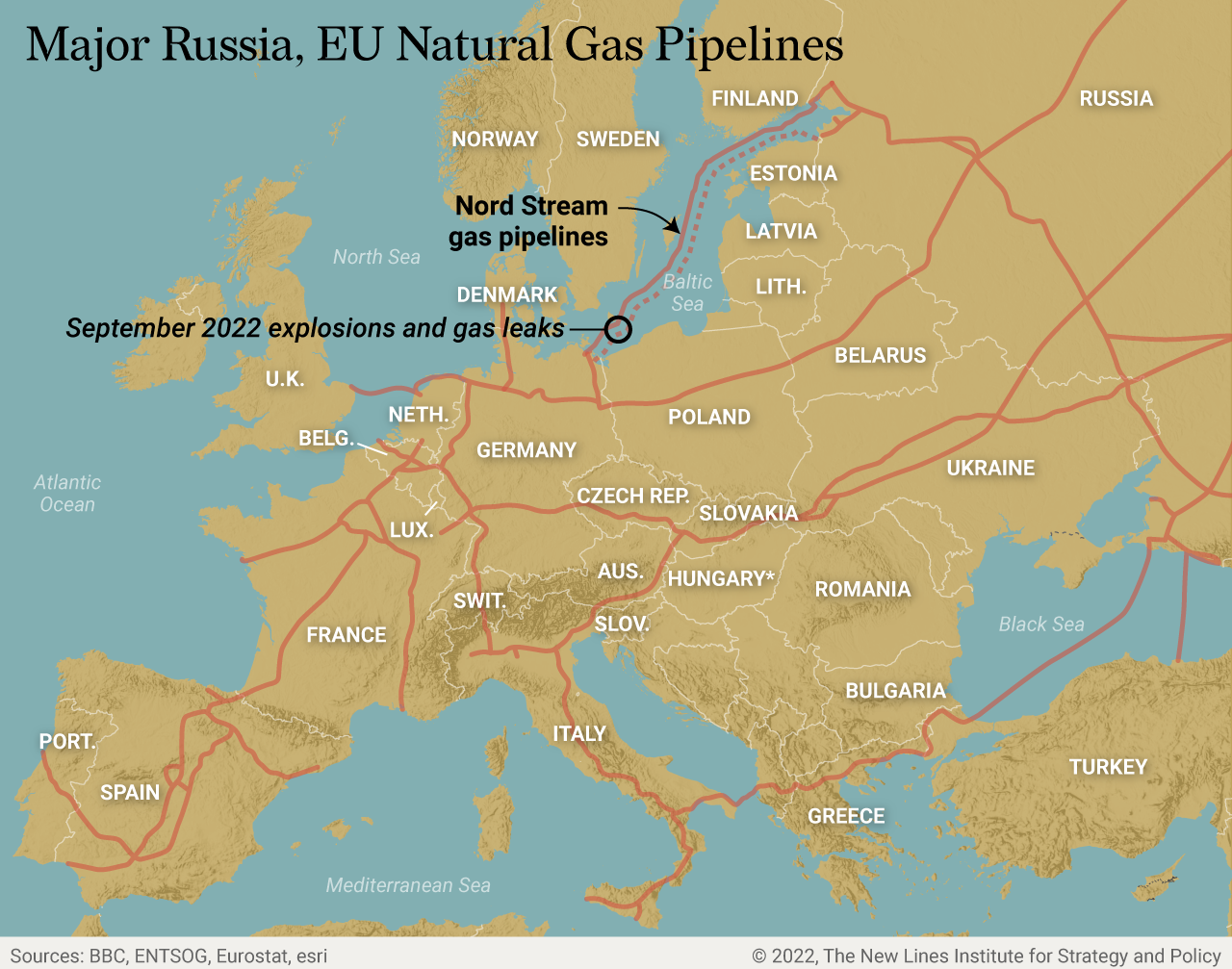
Europe can also turn to the United States as a partner. Energy policy, energy security and markets, and clean and renewable energy technology are all vital areas in which the United States and EU can and have worked together. As a result of the conflict between Russia and Ukraine, the two will need to increase their cooperation in the areas of renewable energy infrastructure, green hydrogen, unconventional oil and gas exploration, and the development of new liquefied natural gas import infrastructures.
Chaouki Ghenai is an Associate Professor at the Sustainable and Renewable Energy Engineering Department, College of Engineering; Chair of the Energy and Climate Change Circle, Sustainability Office; and Director of the Renewable Energy & Energy Efficiency Research Group, Center for Sustainable Energy and Power Systems, at the University of Sharjah. Dr. Ghenai received his Ph.D. and master’s degrees in Mechanical Engineering from Orleans University in France and bachelor’s degree in mechanical engineering from Constantine University in Algeria. Ghenai has published more than 200 research papers in technical journals, book chapters, and books.
The views expressed in this article are those of the author and not an official policy or position of the Newlines Institute.

